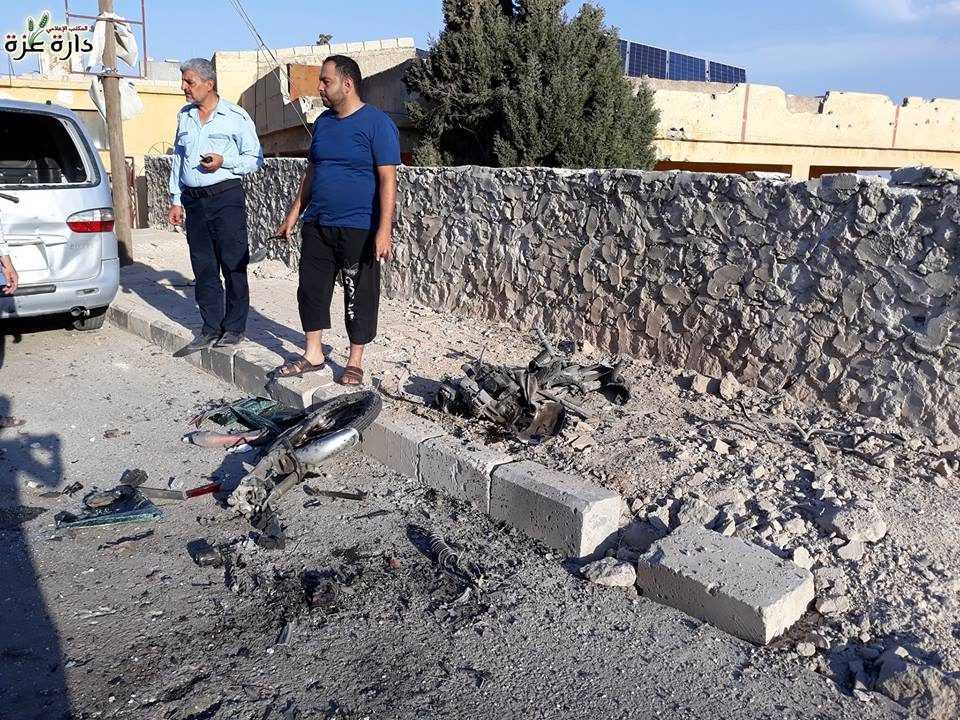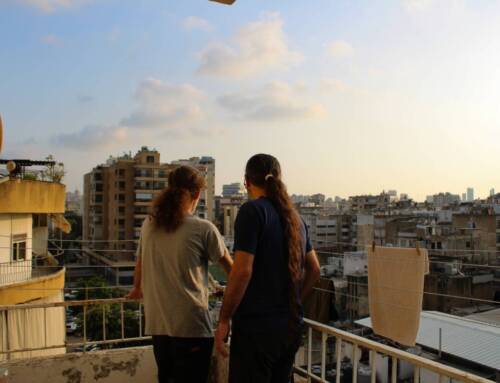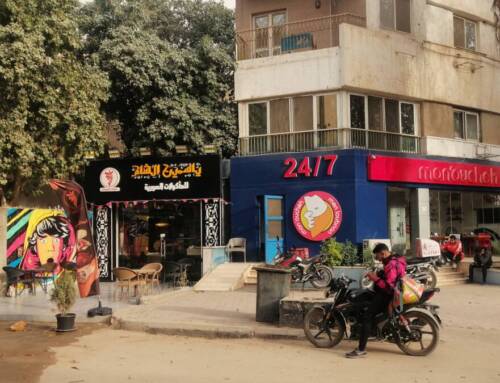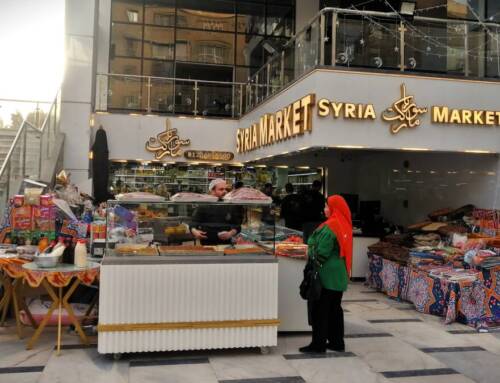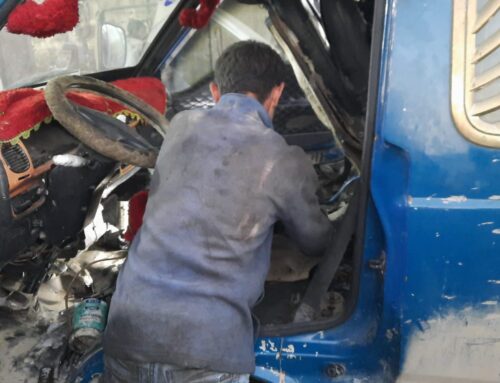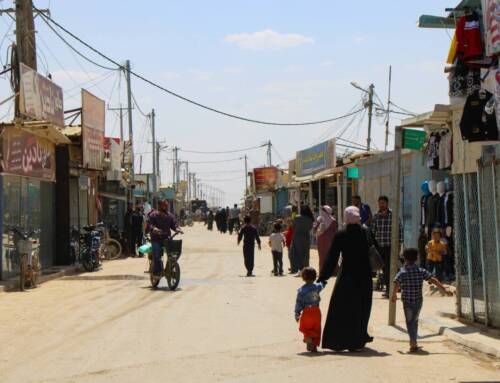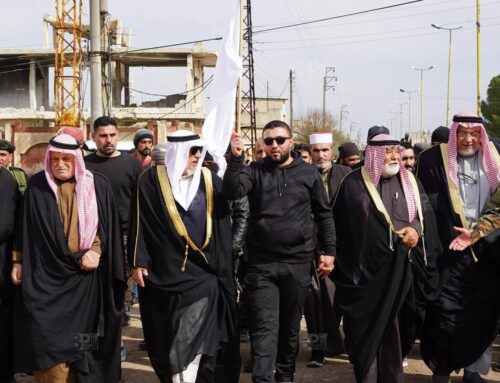After Idlib agreement, hints of HTS-NLF tensions in one rebel-held town
The remnants of an explosion in Darat Izza last week. […]
27 September 2018

AMMAN: Half of the roads leading into an opposition-held town in northwestern Syria remained closed Thursday, one day after a breakout in intra-rebel tensions there that cast doubt on the tenacity of a recent Russian-Turkish agreement over the fate of Syria’s rebel-held northwest.
Fighters from the hardline Islamist coalition Hay’at Tahrir a-Sham (HTS) were filmed streaming out of the northern Aleppo town of Darat Izza on Wednesday night, after their reported “expulsion” due to tensions with a local rival faction and residents.
Darat Izza sits on a crossroads in rural Aleppo province that runs between Turkish-occupied territory in Syria’s far northwest and rebel-held Idlib province to the south and west. A nearby hilltop provides a strategic vantage point of the surrounding countryside.
Videos posted online to local social media pages Wednesday night purported to show HTS fighters leaving through the town’s narrow streets via motorcycles and armored pickup trucks. In one such video, the sound of dozens of rounds being fired into the air can be heard. In a second, blurred clip, local residents shout unintelligibly as the fighters drive away under cover of darkness.
By Thursday, Darat Izza was “under the control of the National Liberation Front [NLF] and the townsfolk,” NLF spokesman Muhammad Adeeb told Syria Direct, “after the expulsion of HTS [the day before].”
The NLF is a Turkish-backed rebel conglomeration, present in Syria’s northwest, that is the main rival of hardline HTS.
HTS fighters are now reportedly stationed around the southern outskirts of Darat Izza, where local residents told Syria Direct on Thursday that the group had “closed off” roads.
Prior to the reported expulsion of HTS fighters, Darat Izza was under mixed rebel control—primarily between HTS and Islamist faction Harakat Nour e-Din a-Zinki, a local rebel faction aligned with the NLF.
But after weeks of back-and-forth accusations between HTS and Zinki over a wave of reciprocal kidnappings and detentions, HTS abandoned its checkpoints within the town.
After the expulsion, HTS and NLF representatives reportedly met for informal talks on Thursday.
A spokesperson from HTS told Syria Direct that the group had “concluded a meeting” on Thursday in response to the previous night’s tensions, and that the results were “positive,” but did not elaborate further.
Speaking later on Thursday afternoon, NLF spokesperson Adeeb told Syria Direct the meeting discussed the possible return of individual HTS members to the town without them forming an official presence there.
History of bad blood, rebel infighting
In Syria’s largely rural Idlib province, where a wide array of armed rebel groups have held control for years, rebel infighting is hardly new.
Harakat Nour e-Din a-Zinki itself formally split from HTS amid rebel infighting throughout Idlib province in 2017.
And yet recent sparring in Darat Izza, including the arrests of alleged fighters from both HTS and the NLF, demonstrate heightened tensions between Idlib’s opposing rebel alliances as they prepare for implementation of a Russian- and Turkish-brokered agreement that, in part, is meant to see the two sides integrate.
Celebrated for seemingly staving off an all-out offensive on Syria’s last rebel-held stronghold, the small-print of the agreement could be complicated by bad blood and myriad factional disagreements on the ground.
The NLF was created earlier this year with significant coordination and support by Turkey. Rather than a cohesive coalition, however, the front is a disjointed array of roughly a dozen parties with wildly divergent ideologies and priorities.
Rebel factions are entrenching and positioning themselves in the wake of the eleventh-hour agreement between Russia and Turkey.
In accordance with the deal, rebel factions are expected to remove all heavy weaponry from the entirety of a newly declared 15- to 20-kilometer buffer zone along the peripheries of Idlib province, while hardline Islamist groups—including HTS—must disarm and fold into the NLF.
Deadline for Russian-Turkish agreement approaches
Although the HTS coalition is yet to release a statement stating its position on the agreement and expectations that it will disarm, senior members of the group have sent defiant signals via the Telegram messaging app, clearly voicing defiance and a willingness to fight.
This week’s tensions in Darat Izza also call into question how exactly HTS and the NLF are set to cooperate—if at all—in the coming weeks and months as the October 15 deadline for implementation of the Russian-Turkish agreement approaches.
Adeeb, the NLF spokesperson, accused rival HTS of planning to “expand in the area despite any international agreement or any form of solution.”
“Today, there’s HTS mobilization around the city, and we’re mobilizing inside the city to protect it,” Adeeb added, although Syria Direct could not independently verify his claim.
“Of course before yesterday’s incident, [HTS] was present in the form of individuals, and not as a military force. They were basically fighters with no strength.”
One Darat Izza resident, speaking on condition of anonymity for fear of reprisals, told Syria Direct that he and others in Darat Izza were “opposed” to HTS’ presence in the town prior to the group’s departure late Wednesday.
“To be honest, most of us support the Free Syrian Army,” the resident said.
Another resident, Muhammad a-Sheikh, told Syria Direct that “people went out in protest [on Wednesday night], refusing the presence of HTS fighters inside Darat Izza.”
A statement shared via social media on Wednesday by prominent residents of Darat Izza called on the town to remain “neutral, without any infighting between the factions,” adding that families in Darat Izza would not accept “interference from any military entity.”
HTS and its partners are estimated by various sources to include anywhere from 10,000 to 20,000 fighters, maintaining a commanding presence in some 60 percent of northwestern, rebel-held territory.

